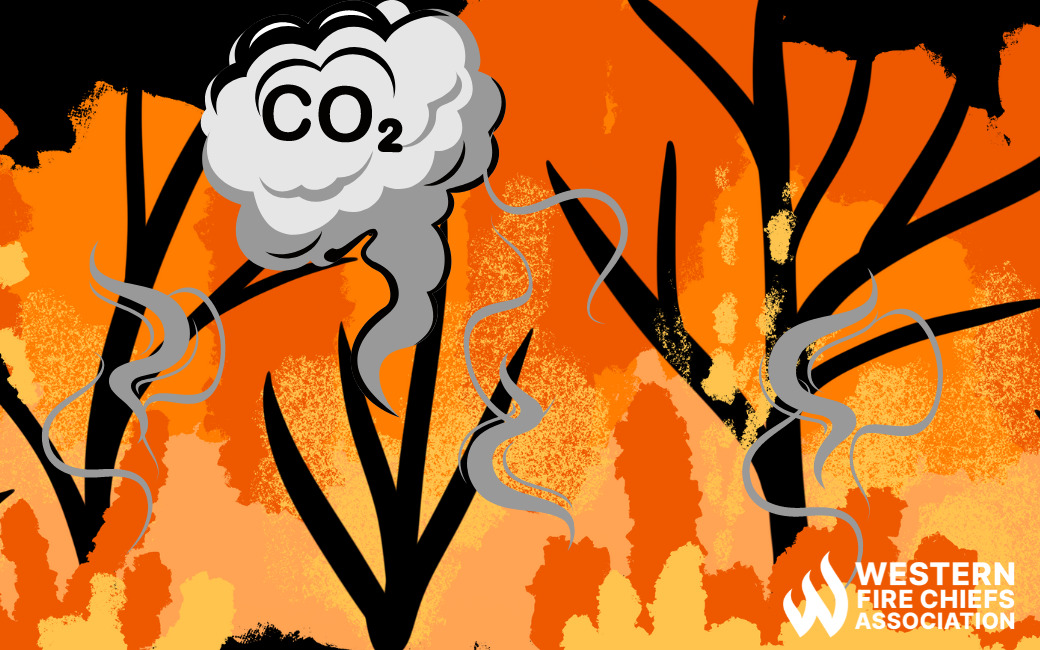Fire Pit Safety Tips
Stay safe around the campfire with tips from the Western Fire Chiefs Association. Learn essential precautions and practices for a worry-free outdoor campfire.
Uncover the impact of wildfires on carbon emissions. Explore how wildfires contribute to climate change and affect our environment, with expert guidance from the WFCA.
Published:September 19, 2023
Edited:March 1, 2024

Uncover the impact of wildfires on carbon emissions. Explore how wildfires contribute to climate change and affect our environment, with expert guidance from the WFCA.
Climate change has been linked to an increase in wildfires, which in turn contribute to carbon emissions. These fires release significant amounts of gases into the atmosphere, exacerbating the greenhouse effect and further fueling climate change.
When wildfires ignite, they consume vegetation and organic matter, releasing carbon dioxide (CO2) and other greenhouse gases into the atmosphere. CO2 is the primary greenhouse gas responsible for trapping heat and contributing to global warming.1 Wildfires can release methane (CH4), another potent greenhouse gas.
The combustion process during wildfires involves the rapid oxidation of organic materials, such as trees, grass, and shrubs. This process releases the stored carbon in these materials in the form of CO2. The intensity and duration of the fire, as well as the type of vegetation burned, can influence the amount of carbon emissions.2
Wildfires also have indirect effects on carbon emissions. When forests burn, they not only release carbon stored in vegetation but also reduce the carbon sink, which is the capacity of ecosystems to absorb CO2 through photosynthesis. This reduction can further contribute to the overall increase in atmospheric CO2 levels.3
A May 2023 study by the journal Environmental Research Letters offered valuable insights into the connection between the climate crisis and wildfires. The study reveals that climate change plays a significant role in intensifying wildfires and increasing carbon emissions.6 As the climate continues to warm, it creates drier conditions and extends the duration of fire seasons.
This study emphasizes the urgent need to address climate change to mitigate the devastating impact of wildfires. Implementing measures to reduce greenhouse gas emissions and promote sustainable practices can help combat the climate crisis and protect ecosystems from the destructive consequences of wildfires.7
Rising temperatures, prolonged droughts, and changing weather patterns create ideal conditions for wildfires to ignite and spread. As vegetation becomes drier and more susceptible to burning, fires become more frequent and intense. The connection between climate change and wildfires lies in the carbon emissions they produce.4
The carbon emissions from wildfires can offset the greenhouse gas reductions achieved through other means.1 For example, California’s efforts to reduce emissions from transportation and industry can be counteracted by the significant carbon emissions resulting from wildfires. This creates a challenging situation where progress in reducing greenhouse gas emissions is negated by the carbon released during these devastating fires.5
To understand the full impact of climate change on carbon emissions, it is crucial to consider the broader context. This includes examining the interplay between rising temperatures, changing precipitation patterns, and the increased likelihood of extreme weather events. These factors collectively contribute to the intensification of wildfires and the subsequent release of carbon into the atmosphere.
Stay safe around the campfire with tips from the Western Fire Chiefs Association. Learn essential precautions and practices for a worry-free outdoor campfire.
Discover essential firework safety tips to ensure a dazzling display without accidents. Learn how to celebrate responsibly with expert guidance from WFCA.
Explore the role of AI in wildfire prediction with guidance from the WFCA. Learn how advanced algorithms and data analytics enhance early detection and response.